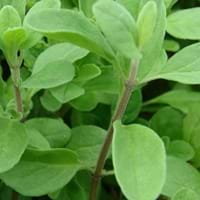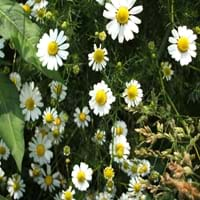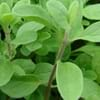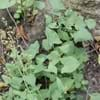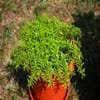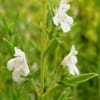Life Span
Annual
Perennial
Origin
Western Europe, Turkey
Europe, Western Asia, India
Types
Aromatic herb
Not Available
Habitat
Dry areas, Rocky areas
Fields, meadows
USDA Hardiness Zone
4-9
Not Available
AHS Heat Zone
10-2
Not Available
Sunset Zone
8, 9, 10, 11, 12, 13, 14, 15, 16, 17, 18, 19, 20, 21, 22, 23, 24
1a, 1b, 2a, 2b, 3a, 3b, 4, 5, 6, 7, 8, 9, 10, 11, 12, 13, 14, 15, 16, 17, 18, 19, 20, 21, 22, 23, 24
Habit
Cushion/Mound-forming
Upright/Erect
Flower Color
White, Pink
White, Yellow
Flower Color Modifier
Bicolor
Bicolor
Fruit Color
Not Available
Not Available
Leaf Color in Spring
Yellow, Yellow green
Green
Leaf Color in Summer
Yellow, Yellow green
Green
Leaf Color in Fall
Yellow, Light Green, Lemon yellow
Green
Leaf Color in Winter
Light Green
Light Green
Leaf Shape
oblong or obovate
bipinnate
Plant Season
Spring, Summer, Fall, Winter
Summer, Fall
Sunlight
Full Sun
Full Sun
Type of Soil
Loam, Sand
Loam, Sand
The pH of Soil
Neutral, Alkaline
Acidic, Neutral
Soil Drainage
Well drained
Well drained
Bloom Time
Late Spring, Early Summer, Summer
Early Summer, Summer, Late Summer, Early Fall
Tolerances
Drought
Drought
Where to Plant?
Ground
Container, Ground, Pot
How to Plant?
Seedlings
Runners, Seedlings
Plant Maintenance
Medium
Medium
Watering Requirements
Do Not over Water
Allow soil to be completely dry in between waterings, Do Not over Water, Drought Tolerant, Requires regular watering
In Summer
Lots of watering
Lots of watering
In Spring
Moderate
Moderate
In Winter
Average Water
Average Water
Soil pH
Neutral, Alkaline
Acidic, Neutral
Soil Type
Loam, Sand
Loam, Sand
Soil Drainage Capacity
Well drained
Well drained
Sun Exposure
Full Sun
Full Sun
Pruning
Remove damaged leaves, Remove dead branches, Remove dead leaves
Remove damaged leaves, Remove dead branches, Remove dead leaves
Fertilizers
All-Purpose Liquid Fertilizer
All-Purpose Liquid Fertilizer
Pests and Diseases
Red blotch
Pest Free
Plant Tolerance
Drought
Drought
Flower Petal Number
Single
Single
Fragrant Bark/Stem
Yes
Yes
Foliage Texture
Medium
Fine
Foliage Sheen
Matte
Matte
Attracts
Not Available
Bees, Beetles, Butterflies, Flies
Allergy
Not Available
Anaphylaxis, Asthma, conjunctivitis, Rhinitis
Aesthetic Uses
Showy Purposes
Not Used For Aesthetic Purpose
Beauty Benefits
Not Available
Not Available
Environmental Uses
Air purification
Air purification
Medicinal Uses
Cold, Cough, Diabetes, gallstones, Liver problems, Stomach pain
Antispasmodic, bowel syndrome, Sedative, Stomachic
Part of Plant Used
Leaves, Seeds
Flowers, Herb
Other Uses
Culinary use, Traditional medicine
Can be made into a herbal tea, Used in herbal medicines
Used As Indoor Plant
Yes
No
Used As Outdoor Plant
Yes
Yes
Garden Design
Container, Edging, Edible, Groundcover, Herb / Vegetable, Mixed Border, Rock Garden / Wall
Cutflower, Herb / Vegetable, Mixed Border
Botanical Name
ORIGANUM majorana 'Aureum'
MATRICARIA recutita
Common Name
Sweet Marjoram
German Chamomile, Scented Mayweed
In Hindi
मीठा कुठरा
जर्मन कैमोमाइल
In German
Majoran
Echte Kamille
In French
marjolaine
Matricaria recutita
In Spanish
mejorana
Matricaria recutita
In Greek
γλυκό μαντζουράνα
γερμανικό χαμομήλι
In Portuguese
manjerona
Camomila vulgar
In Polish
słodki majeranek
Rumianek pospolity
In Latin
amaracus
Matricaria chamomilla
Phylum
Tracheobionta
Anthophyta
Class
Magnoliopsida
Magnoliopsida
Family
Lamiaceae
Asteraceae
Genus
Origanum
Matricaria
Clade
Angiosperms, Asterids, Rosids
Not Available
Tribe
Not Available
Anthemideae
Subfamily
Not Available
Not Available
Number of Species
Not Available
Not Available
Season and Care of Sweet Marjoram and German Chamomile
Season and care of Sweet Marjoram and German Chamomile is important to know. While considering everything about Sweet Marjoram and German Chamomile Care, growing season is an essential factor. Sweet Marjoram season is Spring, Summer, Fall and Winter and German Chamomile season is Spring, Summer, Fall and Winter. The type of soil for Sweet Marjoram is Loam, Sand and for German Chamomile is Loam, Sand while the PH of soil for Sweet Marjoram is Neutral, Alkaline and for German Chamomile is Acidic, Neutral.
Sweet Marjoram and German Chamomile Physical Information
Sweet Marjoram and German Chamomile physical information is very important for comparison. Sweet Marjoram height is 15.20 cm and width 30.50 cm whereas German Chamomile height is 20.20 cm and width 25.40 cm. The color specification of Sweet Marjoram and German Chamomile are as follows:
Sweet Marjoram flower color: White and Pink
Sweet Marjoram leaf color: Yellow and Yellow green
German Chamomile flower color: White and Yellow
- German Chamomile leaf color: Green
Care of Sweet Marjoram and German Chamomile
Care of Sweet Marjoram and German Chamomile include pruning, fertilizers, watering etc. Sweet Marjoram pruning is done Remove damaged leaves, Remove dead branches and Remove dead leaves and German Chamomile pruning is done Remove damaged leaves, Remove dead branches and Remove dead leaves. In summer Sweet Marjoram needs Lots of watering and in winter, it needs Average Water. Whereas, in summer German Chamomile needs Lots of watering and in winter, it needs Average Water.
